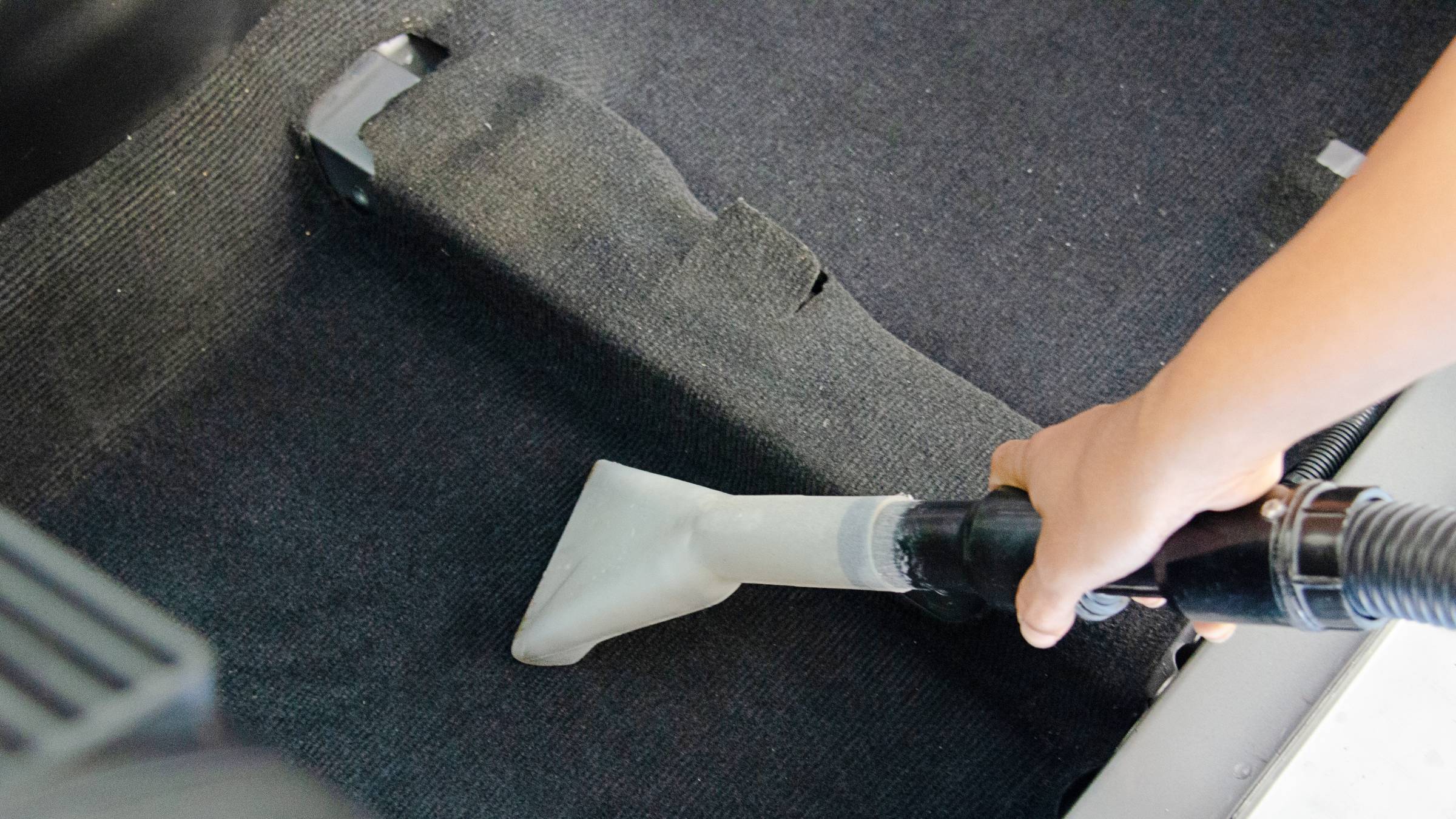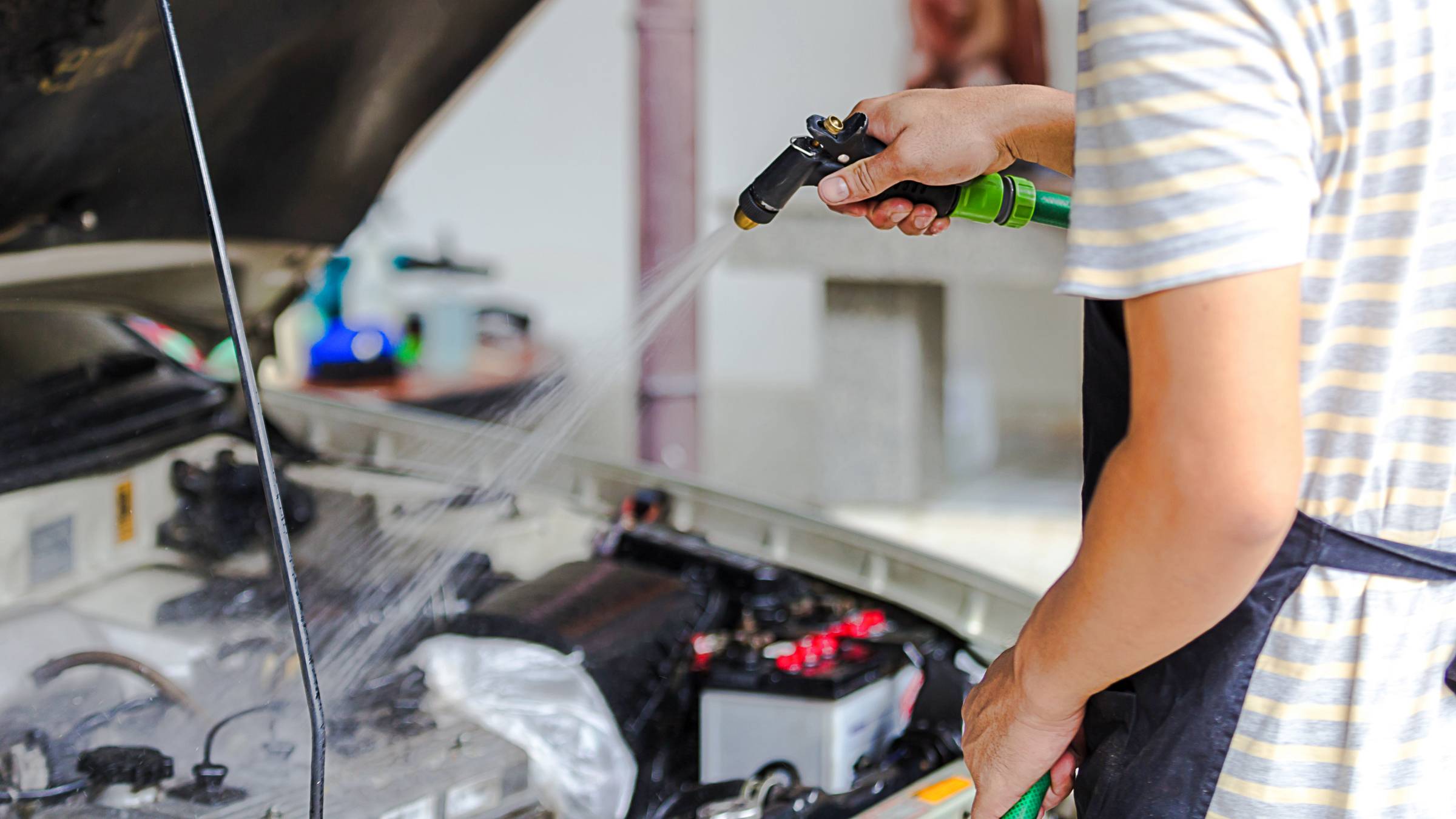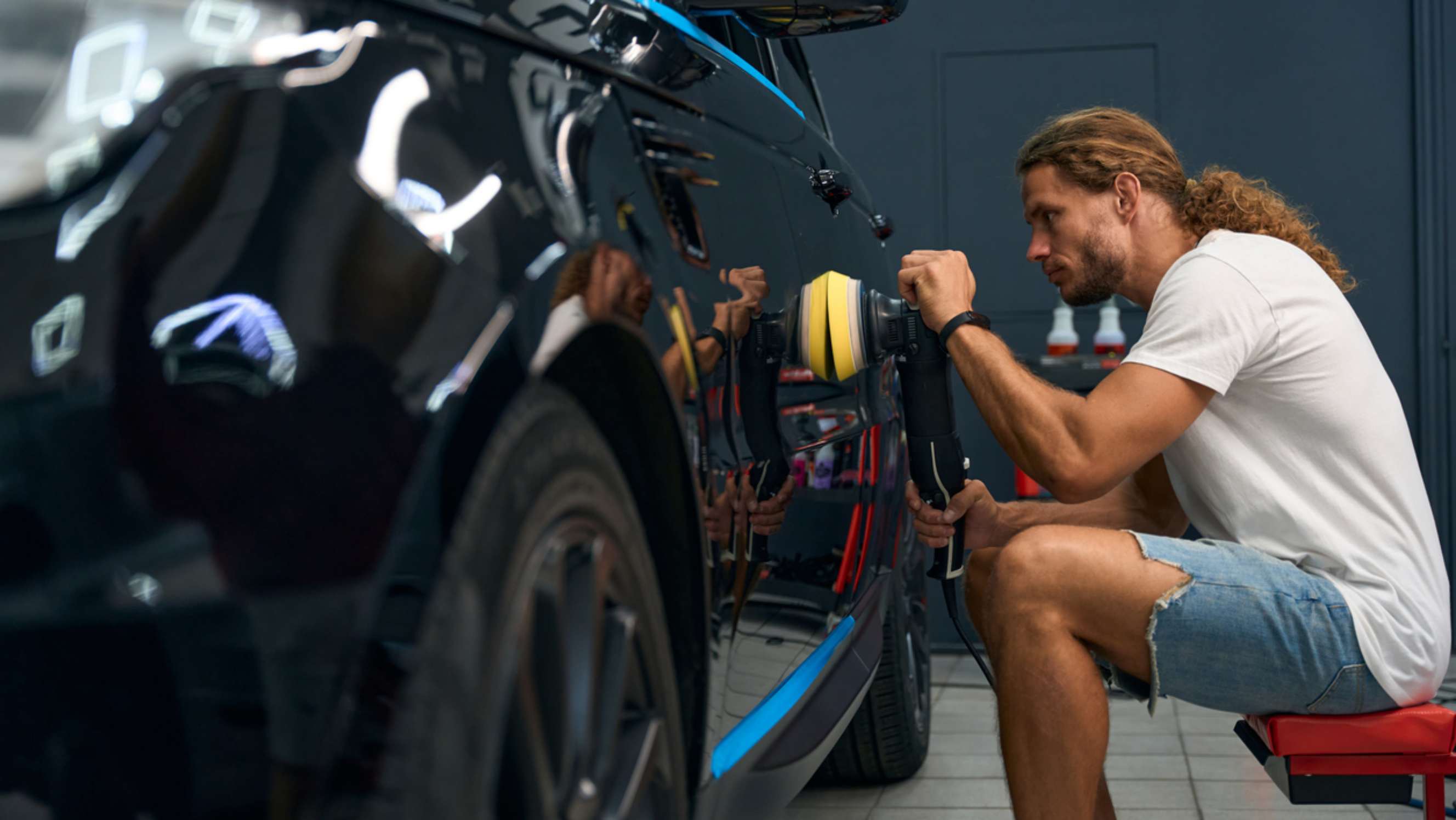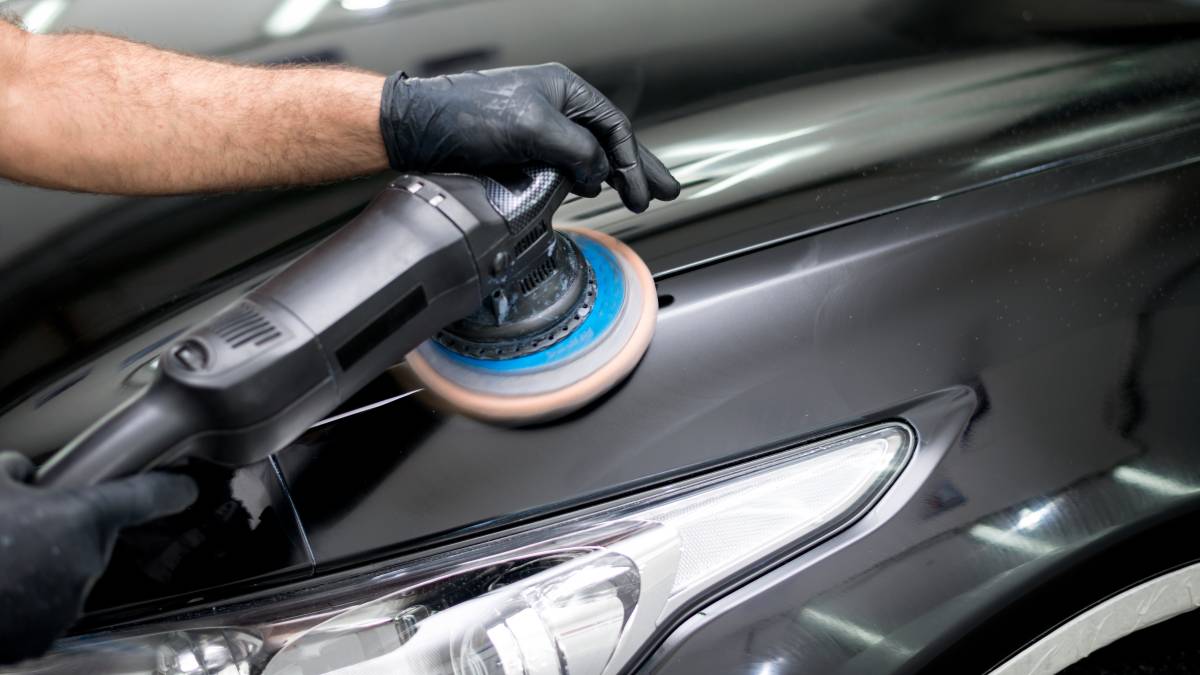- Home/
- Comparisons/
- Car Detailing/
- PPF vs Ceramic Coating

PPF vs ceramic coating: Which is better for your car?
Comparing PPF and ceramic coating in terms of surface protection, scratch resistance, and more.
Hire a car detailing expertPublished on

Written by Cielo B.
Staff Writer
Read more about our contributor
Key Facts
Paints Protection Film (PPF) is a transparent car wrap made of urethane, known for its self-healing properties. It also has a thin, clear coat on top of the urethane film for added UV protection.
Ceramic coating is a liquid polymer containing nano-ceramic particles that bond to a vehicle’s paint, creating a hydrophobic layer.
No matter how careful you are, scratches, swirl marks, and faded spots can appear on your car’s exterior. This could be due to improper car washing techniques or various environmental factors, such as frequent exposure to sunlight and rain. The good news is that you can protect your car from these with car paint protection covers like PPF and ceramic coating.
In this article, you will learn more about PPF vs ceramic coating, and which one offers the best protection for your vehicle.
What is Paint Protection Film (PPF)?
 Paint protection film being applied to safeguard a car's surface. (Source: iStock)
Paint protection film being applied to safeguard a car's surface. (Source: iStock)
Paint Protection Film, or PPF, is a transparent car wrap made of urethane, a thermoplastic polymer known for its strength and flexibility. What’s unique about this car wrap is that it has self-healing properties. The transparent urethane film absorbs the impact from the rock chips and debris, preventing the paint from chipping off.
A PPF car wrap originated in the Vietnam War, around 1955 — 1975, as an added protection for the helicopter’s rotor blades since fragments of bombs and other objects are thrown during an explosion. It became popular in the 1980s in the car racing scene since the transparent, lightweight PPF helped protect the car’s exterior while minimising damage during close-quarter driving.
Today, many car companies have adopted this innovative car wrap and enhanced it further with UV protection. Modern PPF car wraps now have a thin, clear coat on top to seal and protect the urethane film from environmental elements and prevent it from yellowing. Additionally, they now look clearer, appearing almost invisible upon application.
PPF is also known as a 'clear bra.' The term comes from a car bra, a black vinyl cover which is one of the first paint protection films developed in the 1960s.
What is ceramic coating?
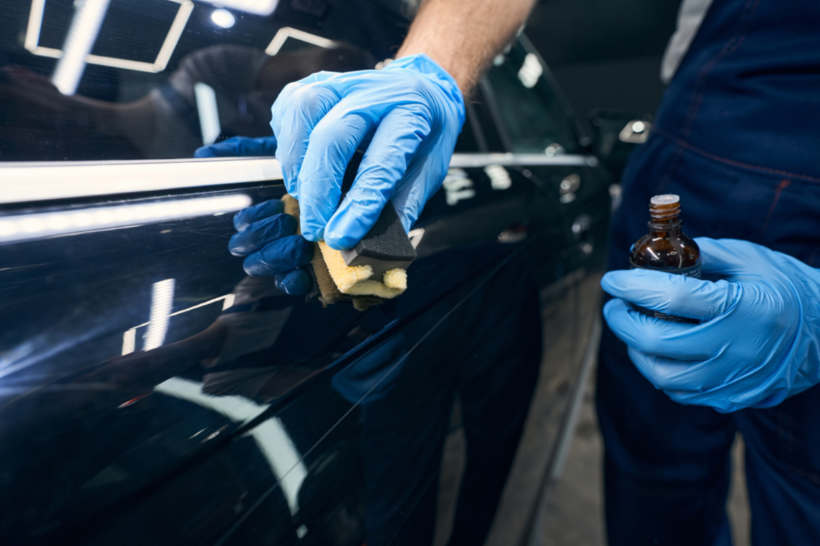 Professionally applying ceramic coating for ultimate shine and protection. (Source: iStock)
Professionally applying ceramic coating for ultimate shine and protection. (Source: iStock)
A ceramic coating is a liquid polymer comprising nano-ceramic particles that bond with the vehicle’s exterior paint, creating a thin, smooth, hydrophobic layer that protects the car from acid rain and oxidation. Thanks to its hydrophobic layer, water and dirt slide off the car paint surface, making the car easier to clean.
There are two kinds of car ceramic coating:
Silicon dioxide (SiO2), also known as silica-based coating, is the most popular ceramic coating that forms a hydrophobic layer. This car paint protection coating helps protect vehicles from harmful UV rays and acid rain.
Titanium Dioxide (TiO2) coating offers a more durable protection against scratches and everyday wear and tear because it forms a hydrophobic and oleophobic layer that repels water and oil. Like silicon-based coatings, it also has UV absorbers to prevent oxidation and fading.
Some ceramic coatings combine silicon dioxide and titanium dioxide to provide the best of both worlds. Commonly known as hybrid coatings, they offer exceptional durability while being easy to apply.
Ceramic coating vs PPF: How do they differ?
Both PPF and ceramic coatings are excellent protective covers based on their definitions alone. But before you make your final decision, it’s vital to understand their pros and cons to determine which is a more suitable car paint protection option.
In terms of surface protection
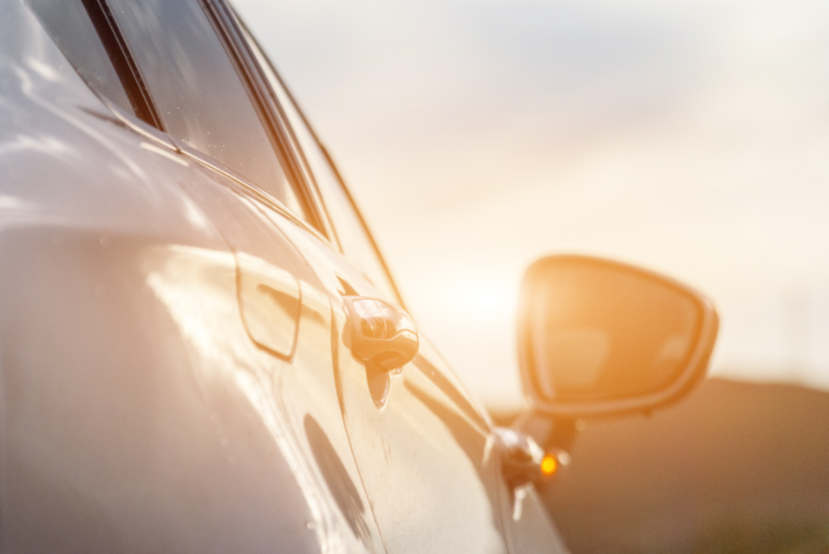 The sunlight reflects off a car’s protected surface. (Source: iStock)
The sunlight reflects off a car’s protected surface. (Source: iStock)
PPF offers better surface protection than a ceramic coating. It uses a polyurethane layer that absorbs and disperses impact from stone chips, small rocks, and road debris. This can be advantageous if you frequently drive on rough terrain, where loose stones can dent or create a small hole in the car’s exterior.
Moreover, PPF has an additional thin clear coat on top of the urethane film. This coat protects the car paint from harmful UV rays, reducing the likelihood of paint oxidation, fading, and other causes of paint damage. In addition, it provides added protection against chemical damage caused by bug splatters and bird droppings.
A car ceramic coating can still provide ample surface protection as the nano-ceramic particles help repel water, oils, and other chemical contaminants. However, this type of car protective coating is only highly effective against chemical stains. It doesn’t offer much protection against small rocks, gravel, and other hard objects that could hit and damage the car's paintwork.
In terms of scratch resistance
Since PPF offers better surface protection, it gives cars better resistance against scratches and swirl marks.
The polyurethane film used in PPF car coating comprises elastomeric polymers. When you apply heat to the film using a heat gun, the self-healing properties of PPF activate, causing minor scratches and swirls to disappear. Even the natural heat from the sun is enough to activate its self-healing effects.
Meanwhile, ceramic coating offers limited scratch resistance. Upon application, the nanoparticles start to bond chemically to the car’s factory paint, creating a hard surface that smoothens minor scratches and swirls. However, since it lacks the self-healing properties of PPF, it doesn’t offer the same level of scratch resistance as PPF.
In terms of appearance
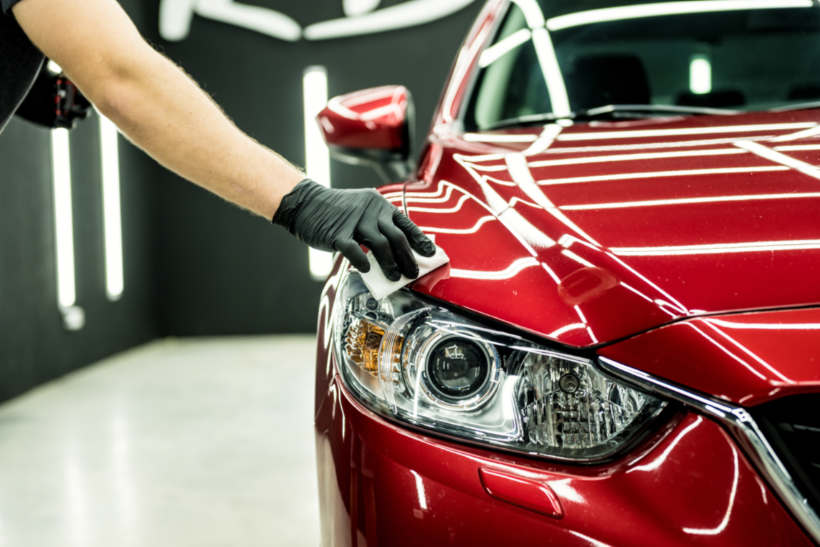 PPF or ceramic coating keeps this car shining and protected. (Source: iStock)
PPF or ceramic coating keeps this car shining and protected. (Source: iStock)
Both PPF and ceramic coating can help restore and improve a car’s appearance. The urethane film used in PPF appears almost invisible, helping maintain the original vibrant colour of car paint. This adds a polished look, making the vehicle appear brand-new again.
On the other hand, ceramic coating adds gloss and shine, enhancing a car’s appearance. Your vehicle will look smooth with a mirror-like finish since the ceramic coat also creates a slick surface, reducing the appearance of minor scratches and swirl marks.
Moreover, a ceramic-coated vehicle has a self-cleaning effect. It creates a hydrophobic layer that allows the water to bead up and roll off the surface, keeping the car smooth and free from dirt.
In terms of the longevity of protection
PPF lasts longer, with the high-quality ones having an average lifespan of 5-10 years. Thanks to its self-healing properties, this car protection can help fix minor scuffs and scratches. Just make sure to have the PPF installed only by a professional since they already possess the experience and expertise to ensure better adherence to the film.
Ceramic coatings also provide long-term protection, with the nano-ceramic particles permanently or bonding to the vehicle’s paint. Multiple layers can be applied to extend their longevity, but since they lack the self-healing properties of PPF, they usually last only three to seven years.
However, even though PPF lasts longer than a ceramic coating, both can degrade quickly if your car is often exposed to intense sunlight, rain, and other environmental factors. This is why you should always park your vehicle in a garage to ensure the longevity of your protective film or coating.
In terms of cleaning and maintenance
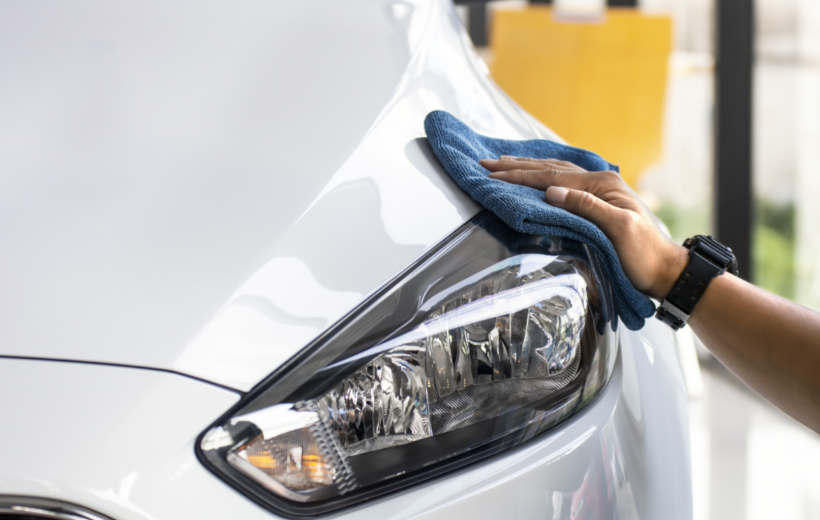 Easy maintenance keeps this car’s PPF or ceramic coating spotless. (Source: iStock)
Easy maintenance keeps this car’s PPF or ceramic coating spotless. (Source: iStock)
Ceramic-coated cars are easier to clean and maintain than PPF-coated ones because of their hydrophobic nature. They make car washing easier and less frequent.
But, despite the slight advantage of ceramic coating over PPF, both still require regular vehicle washing, usually every one to two weeks, to prevent dirt and grime buildup. Just make sure you apply the two-bucket method when washing the car. This involves using a wash bucket filled with a mild, pH-neutral car wash shampoo and a separate rinse bucket filled with clean water to prevent the wash mitts from spoiling your soapy water and re-introducing dirt into the car’s surface.
EXPERT TIP: Whether you use PPF or ceramic coating, make sure to perform periodic maintenance by applying a specialised ceramic coating spray to your car’s exterior. This helps prolong the ceramic coating's hydrophobic effects and provides an additional layer of protection to PPF-covered cars.
In terms of cost
The cost of ceramic coating is more affordable upfront, with base coatings starting from £250 and premium coatings going up to £2000 or more. The price increases if you own a large vehicle and need a paint correction service to ensure your car’s exterior is free from car paint defects before applying the protective coating.
The cost of a PPF car wrap is more expensive upfront, ranging from £500 to £5000, because it’s more difficult and complex to install. It requires advanced tools like a vinyl cutting plotter to cut out PPF film in exact shapes to fit specific areas of the car. While the car wrapping cost for this kind of protective car paint film is costly, it’s worth availing of since it offers long-lasting protection.
Let an expert detailer handle your car's paint protection needs: Post a task on Airtasker today!
Whether you choose PPF or ceramic coating, having an expert install them is best because they will ensure even coverage, providing a uniform coat and a beautiful finish. They will also prepare your car’s surface first to ensure the PPF or ceramic coating adheres well to your car’s exterior.
At Airtasker, finding a car detailing expert for your car paint protection needs is easy! You only have to post a task indicating your budget and desired service.
Learn more about our contributors

Written by Cielo B.
Staff Writer
Cielo is an experienced content writer who has explored various industries throughout her career. Her expertise, founded on a degree in journalism, includes writing about automotive and vehicle maintenance. She’s an avid car enthusiast who loves driving through lush rural areas with her old (but reliable) manual car. Cielo also covers topics like dressmaking, tailoring, and photography since she is a passionate cosplayer who enjoys dressing up as her beloved anime characters.
PPF vs ceramic coating
| Paint Protection Film (PPF) | Ceramic Coating | |
|---|---|---|
|
Surface Protection |
Offers superior protection against impact, UV rays, and chemical damage |
Repels water, oils, and chemicals effectively; limited protection against impact |
| Scratch Resistance | High scratch resistance with self-healing properties | Moderate scratch resistance; lacks self-healing properties |
|
Appearance |
Nearly invisible; maintains original paint colour | Adds gloss and shine; creates a slick, mirror-like finish |
|
Longevity of Protection |
Lasts 5-10 years; self-healing properties extend lifespan |
Lasts 3-7 years; multiple layers can extend lifespan |
|
Cleaning and Maintenance |
Requires regular cleaning | Easier to clean due to hydrophobic properties |
| Cost | More expensive upfront; ranges from £500 to £5000 | More affordable upfront; ranges from £250 to £2000+ |
FAQs about PPF and ceramic coating
Yes, it’s worth getting paint protection because it helps maintain a clean and polished look. Plus, it shields the car from scratches and chips, minimising the need for future repairs. Just ensure to get a paint protection service from an expert detailer to ensure a flawless finish.
You don’t need PPF if your car already has ceramic coating. Ceramic coating protects your vehicle against harmful UV rays and other environmental factors. However, if you want maximum paint protection, applying PPF and ceramic coating is best. Just make sure to apply PPF first since it may not adhere well if you apply PPF after the ceramic coating.
Although ceramic coating helps protect car paint, it doesn’t remove scratches and swirl marks, so they remain visible after you apply the ceramic coating. Plus, your vehicle can be easily chipped or damaged with heavy impact.
When it comes to long-term protection, ceramic coating is better than a car wrap because it forms a semi-permanent bond with the car paint, creating a shield that protects the car from UV damage and oxidation. But when it comes to customisation, car wrapping is the better choice as it’s removable and comes in a wide range of colours.
Find car detailers, fast
Post a task
Related articles
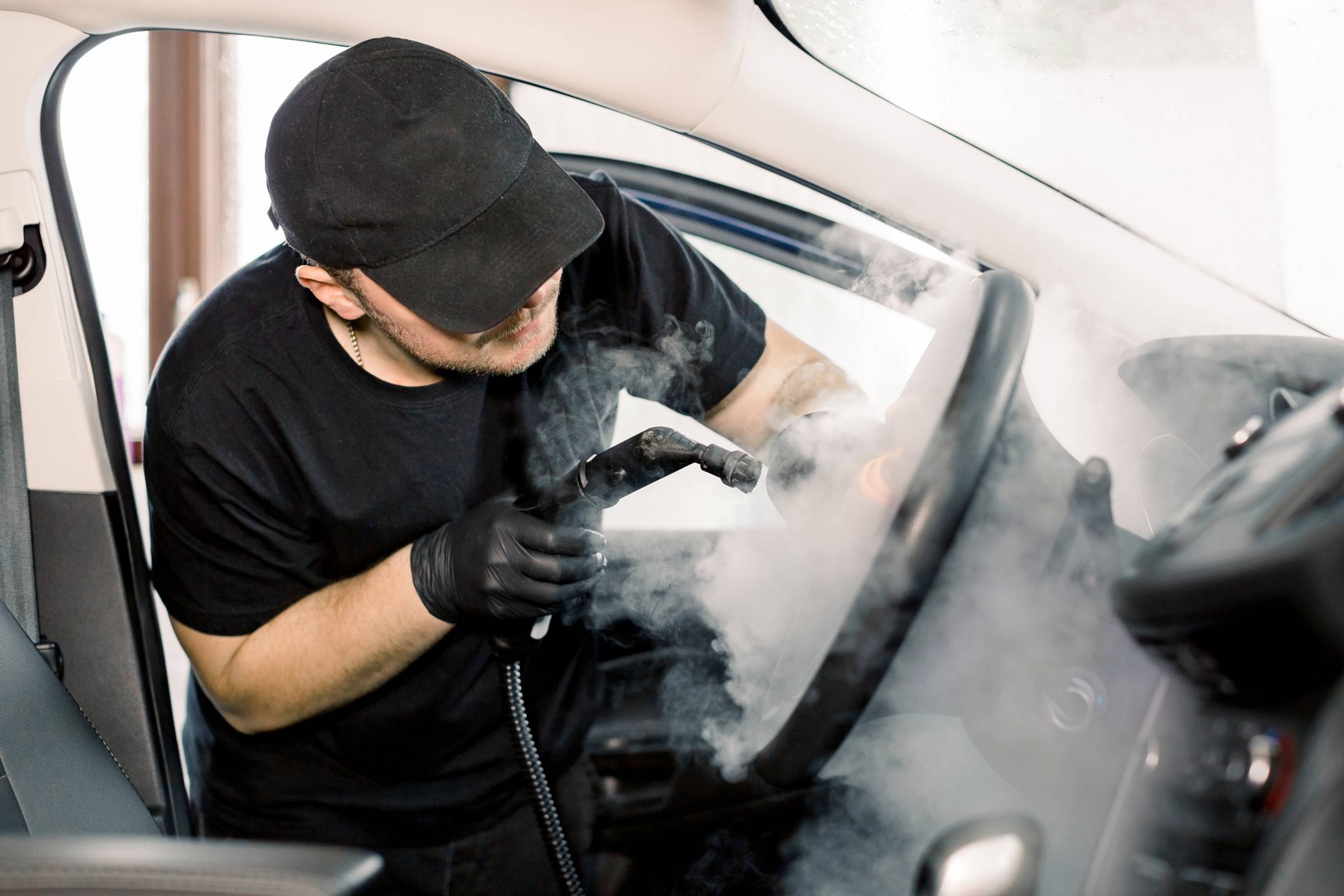
How to detail your own car with ease
Read more
Related price guides
